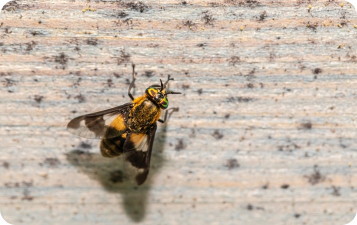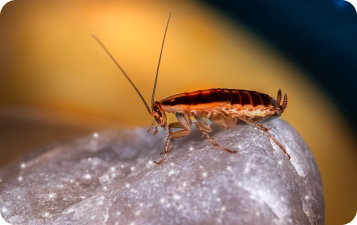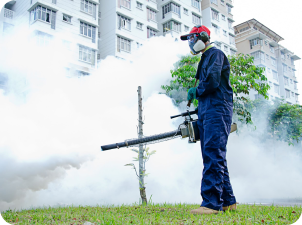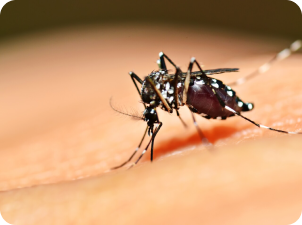Flies can be a nuisance when buzzing around your premise, particularly if in large numbers. However, some species of fly also pose health risks to humans. House flies transmit a wide range of diseases including salmonella, dysentery, tuberculosis, cholera and parasitic worms. In India, there is a high risk of disease transmission through flies. During emergency situations, when hygiene conditions are less than optimal, flies often are the main reason for cholera and dysentery epidemics. But even under normal conditions, children and elderly are at a greater risk of conducting more common diseases such as salmonella food poisoning from fly contaminated food.

Flies can be vacuumed off the surfaces on which they are hibernating; in areas inaccessible to vacuuming, a residual insecticide such as a pyrethroid can be applied. For application of residual insecticides, contact a reputable pest control company.Picaridin and DEET are the most commonly used chemical fly repellents, but picaridin is more popular across the international community. This chemical is a comparable alternative to DEET in just about every category and even seems to last for a longer time.Cayenne pepper is an excellent natural fly repellent and also deters many other insects. Mix one cup of water and one teaspoon of cayenne pepper in a misting bottle and spray it near entryways and wherever you see flies. Other natural fly repellents include lemongrass, peppermint, eucalyptus, camphor, and cinnamon.One of the most overlooked causes of a fly infestation outside the house is dog droppings. Dog owners often don't worry about picking up their dog's droppings in their own yard. Of course, it's also possible that other dogs in the neighborhood are doing that in your yard, and their owners just aren't picking it up.

General pest control means eradication of Cockroaches, Mosquitoes, Flies, Lizards, etc through permitted insecticides by applying non – toxic chemicals with specific formulation suitable for Dairy and Food Industries and timely removal and disposal of killed pests as per Government of India and WHO norms.

Cockroaches are nocturnal creatures that love dark, warm, moist hiding places in cracks, crevices, or hard-to-reach corners. The first step to eradicating an infestation is removing food sources and hiding places, especially since cockroaches only return to habitable places. With a little detective work, a persistent strategy, and preventative measures, you can make your house an unattractive place for roaches, which will not only manage an infestation, but also prevent them in the future.

Make a 50-50 solution of water and vinegar. With the solution repeat the wiping process not forgetting about the cabinets, doorknobs, drawers, and cupboards. After wiping down the surfaces discard the cloth immediately. Proceed to mop the floors using warm soapy water to get rid of the remaining fumigants.Normally, you can go back home three days after fumigation. Give your house enough time to air out, then do a thorough cleaning. The first thing to do is to check if there are food items that have been left exposed during the entire fumigation process.Fumigation typically lasts four years, but we recommend a termite inspection every two to four years to keep your home protected. Because termites can sometimes secret themselves away in areas where fumigations can't reach, make sure to note any signs of damage after a treatment.

Fogging, as the term suggests, uses disinfectant sprayed from a Fogging machine to create what looks like fog in the room. It is an effective way to disinfect high levels of horizontal surfaces, hard to reach areas that are often missed or forgotten and small, and confined spaces such as extractor units.

Several types of mosquito are carriers of diseases, some of which are deadly. In Malaysia only Aedes aegypti and Aedes albopictus transmit dengue, chikungunya, and Zika viruses. Anopheline mosquitoes carry both human and monkey malaria while several Culexmosquitoes are known to carry Japanese encephalitis virus. Other Culex mosquitoes are also the main cause of nuisance due to their bites. In addition to treatment and healthcare, controlling and eliminating the mosquito carriers is a crucial measure to stop transmission of these diseases and nuisance.